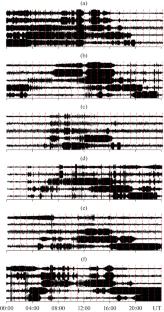Geospace storms develop in the Sun–interplanetary medium–magnetosphere–ionosphere–Earth (inner spheres) (SIMMIAE) system. The study of the physical effects of geospace storms is the most important scientific direction in space geophysics. The problem of interaction between the SIMMIAE subsystems during geospace storms is interdisciplinary and requires a systematic approach to solve it. The problem is multifactorial in nature. The response of the subsystems is determined by the simultaneous (synergetic) effect of a number of perturbing factors. It is important that the SIMMIAE system is open, nonlinear, and nonstationary. It has direct and inverse, positive and negative relationships. Given the multifaceted manifestations of geospace storms, because of the unique nature of each storm, the study of the physical effects of geospace storms is an urgent scientific problem. In addition to the problems of a comprehensive study of the physical effects of geospace storms, the problems of their detailed adequate modeling and forecasting are highly important. Their solution will contribute to the survival and sustainable development of our civilization, which is mastering more and more perfect and complex technologies. The greater the people’s technological advances, the more vulnerable the civilization’s infrastructure to the effects of solar and geospace storms. The purpose of this article is to present the results of the analysis of the magneto-ionospheric effects that accompanied the geospace storm of March 21 to 23, 2017. The following tools were used to observe effects in the ionosphere and in the magnetic field caused by the geospace storm of March 21 to 23, 2017: a custom-made digital ionosonde and a Doppler vertical sounding radar located at the V.N. Karazin Kharkiv National University Radiophysical Observatory (49°38′ N, 36°20′ E) and a fluxmeter-magnetometer at the Magnetometer Observatory of the Kharkiv National University (49°38′ N, 36°56′ E). As a rule, the Doppler vertical sounding radar makes measurements at two fixed frequencies, 3.2 and 4.2 MHz. The smaller of them is effective when studying dynamic processes in E- and F1-layers and the larger one, in F1 and F2-layers. The fluxmeter-magnetometer is intended for monitoring the variations of horizontal H- and D-components of the geomagnetic field in the time range 1…1000 s. Ionospheric processes are analyzed using ionograms. The dependences of the virtual height z´ on frequency are first converted to dependences of the electron density N on the true height z. The temporal dependences N(t) are then constructed for fixed altitudes in the 140…260 km range. Then, the periods T and absolute amplitudes ΔNa of quasi-periodic variations N(t), as well as their relative variations δNa = ΔNa/N, are estimated using system spectral analysis. The amplitudes of the reflected signal of the Doppler vertical sounding radar are also used for the analysis. Gating of the reflected signal makes it possible to obtain temporal dependences of beats amplitude of reflected signal and oscillations of the reference oscillator as well as Doppler frequency shifts for certain altitude ranges. This makes it possible to track the dynamics of amplitudes and heights of the reflected radio waves both during the day and during ionospheric storms. Doppler spectra are also analyzed in detail. On the basis of temporal variations of beat amplitudes using the Fourier transform at a time interval of 60 s, temporal dependences of the Doppler spectra in the range –2…+2 Hz are plotted. Then, the temporal dependences of the Doppler frequency shift fd(t) for the main mode are formed. Next, the fd(t) dependences are subjected to a system spectral analysis over a time interval of 120 min. The signal at the fluxmeter-magnetometer output is converted from the signal in relative units to absolute units (nanotesla) taking into account the amplitude-frequency response of the device. The temporal dependences of the level of H- and D-components are created. These dependences are then subjected to system spectral analysis over a time interval of 12 h in the range of periods T = 1…1000 s. The main results of the studies are as follows. A geospace storm, the energy per unit time of which reached 20 GJ/s, was observed on March 21 to 23, 2017. The storm is classified as weak based on its intensity. The geospace storm was accompanied by a weak ionospheric disturbance in the daytime and a strong ionospheric storm at night. The electron density decreased by 1.3 and 4…5 times, respectively. The geospace storm was also accompanied by two moderate magnetic storms with energies of the order of 1015 J and a power of 70 GW. During the magnetic storms, the level of fluctuations of the horizontal components in the range of periods 100…1000 s increased from ±0.5 to ±5 nT. The period of predominant fluctuations increased from 500…900 to 900…1000 s. At the same time, the spectrum of fluctuations changed significantly.



